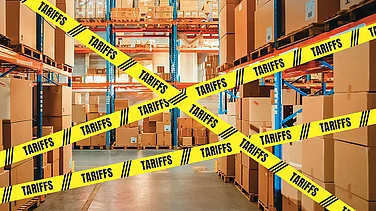
China will suspend its new export controls on rare earths and end investigations targeting US firms, the White House said.
The announcement followed President Trump’s meeting with Chinese President Xi Jinping during his Asia visit aimed at easing trade tensions.
China will issue general licences for exports of rare earths, gallium, germanium, antimony, and graphite to benefit US end users.
China will suspend the global implementation of its sweeping new export controls on rare earths and end various investigations targeting US companies, the White House announced on October 1.
The decision was detailed in a factsheet released by the White House outlining US President Donald Trump’s recent trip to Asia, during which he met Chinese President Xi Jinping. The meeting aimed to ease tensions between the world’s two largest economies.
According to Washington, as part of the agreement, China will issue general licences for the export of rare earths, gallium, germanium, antimony, and graphite, benefiting US end users and their suppliers globally.
“The general licence means the de facto removal of controls China imposed in April 2025 and October 2022,” the factsheet stated.
Furthermore, China will terminate its investigations into US companies in the semiconductor supply chain, including antitrust, anti-monopoly, and anti-dumping probes. Among those under investigation is chipmaking giant Nvidia.
Beijing will also take measures to curb fentanyl trafficking by halting shipments of specific chemicals to North America and tightening global controls. Additionally, China will suspend all retaliatory tariffs and non-tariff measures introduced since March 2025, including those targeting US agricultural products and companies listed as unreliable entities.
The country will resume large-scale agricultural purchases, committing to import at least 12 million metric tonnes of US soybeans by the end of 2025 and 25 million tonnes annually through 2028, along with renewed imports of sorghum and hardwood logs.
China will also ensure the resumption of trade from Nexperia’s Chinese facilities for legacy chips and lift retaliatory actions linked to the US Section 301 investigation into China’s maritime and shipbuilding sectors. Furthermore, it will extend its market-based tariff exclusion process for US imports until 31 December 2026.
In return, Washington will extend the suspension of tariffs imposed by President Trump as “reciprocal” measures on China for another year and will not proceed with the planned 100% tariff on Chinese goods that was set to take effect in November.
While the deal has eased immediate trade tensions, it is widely seen as a temporary truce, with most provisions lasting only a year. Despite both sides securing key concessions, the agreement stops short of addressing the deeper disputes at the heart of the US–China trade rivalry, as well as broader geopolitical issues, including Taiwan and Russia’s invasion of Ukraine.
President Trump has also approved a plan for a US consortium to acquire the American operations of ByteDance’s TikTok, though Beijing has yet to give formal consent. Additionally, Trump announced plans for enhanced energy cooperation, with China agreeing to purchase oil and gas from Alaska.
































